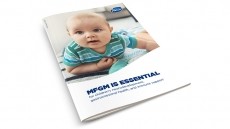Folic acid fortification linked to lower heart defect rates

Writing in the journal Circulation the researchers from the University of British Columbia in Vancouver, Canada, recorded an 11% reduction in the number of babies born with heart defects, whose mothers supplemented their diets with folic acid.
The findings demonstrate why fortifying foods with folic acid -- a B9 vitamin required for cell division and growth—has been considered paramount in decreasing neural as well as heart defects in new born babies.
Folic acid fortification of all flour, enriched pasta, and cornmeal became mandatory in Canada in November 1998.
However, in Europe the folic acid fortification of foods has been the subject of much delay. While the United Kingdom’s Food Standards Agency has recommended folic acid fortification of wheat flour, this process is entirely voluntarily rather than mandatory.
Ireland introduced voluntary fortification of foods with folic acid, but over time the number of fortified foods has decreased, and cases of neural tube defects has risen. In Switzerland, approximately 250 food products are voluntarily fortified with folic acid.
Study details

The study adopted a population-based cohort study consisting of 5 901 701 live births and stillbirths (including late-pregnancy terminations) delivered at more than 20 weeks’ gestation in Canada from 1990 to 2011. The study was spread over 22 years, 14 geographic areas.
72 591 congenital heart defect (CHD) cases were diagnosed at birth and in infancy. The researchers compared their occurrence and trends in CHD before and after 1998 (the year that fortification was mandated).
After controlling for variables such as changes in maternal age, pre-pregnancy diabetes mellitus, preterm preeclampsia, multiple birth, and termination of pregnancy, the effect of folic acid food fortification on CHD could then be quantified on approximately 67 000 births.
The team found the beneficial effects of folic acid evident in some types of CHD but not others. Here a 27% reduction in heart outflow tract abnormalities was recorded.
In addition, a 23% reduction in the narrowing of the aorta was found along with a 15% reduction in holes in the heart wall separating its chambers.
“Women who are likely to get pregnant should start taking folic acid supplements before getting pregnant as they may not necessarily receive adequate folate from diet alone,” said Dr K.S. Joseph, the study’s senior author and professor in the Department of Obstetrics and Gynecology at the University of British Columbia in Vancouver, Canada.
Folic acid has repeatedly been the subject of dietary intervention studies that highlight its effectiveness in preventing CHDs in new born babies.
A Hungarian randomised trial showed that babies born with cardiovascular anomalies was reduced among women offered multivitamins (including folic acid) compared with women offered supplemental trace elements only.
However, another study has demonstrated inconsistent results for the effectiveness of multivitamins containing folic acid and of folic acid fortification on the incidences of CHDs.
Government action

In June of last year the UK government proposed that folic acid be included to a file of required micronutrients used to fortify wheat flour under the Bread and Flour Regulations 1998.
This subject had been first up for discussion back in the 90s when research conducted by the UK Medical Research Council found folic acid was linked to a reduction in neural tube defects by up to 72%.
In 2014, the European Food Safety Authority (EFSA) gave the green light for a health claim approving 400 microgram-dose supplements for women of child-bearing age.
The Council for Responsible Nutrition (CRN) said at the time that supplements offered a targeted strategy, unlike mandatory flour fortification that would include the whole population and may not account for changing consumption patterns.
Source: Circulation
Published online ahead of print, doi.org/10.1161/CIRCULATIONAHA.116.022126
“Effect of Folic Acid Food Fortification in Canada on Congenital Heart Disease Subtypes.”
Authors: K.S. Joseph et al.















